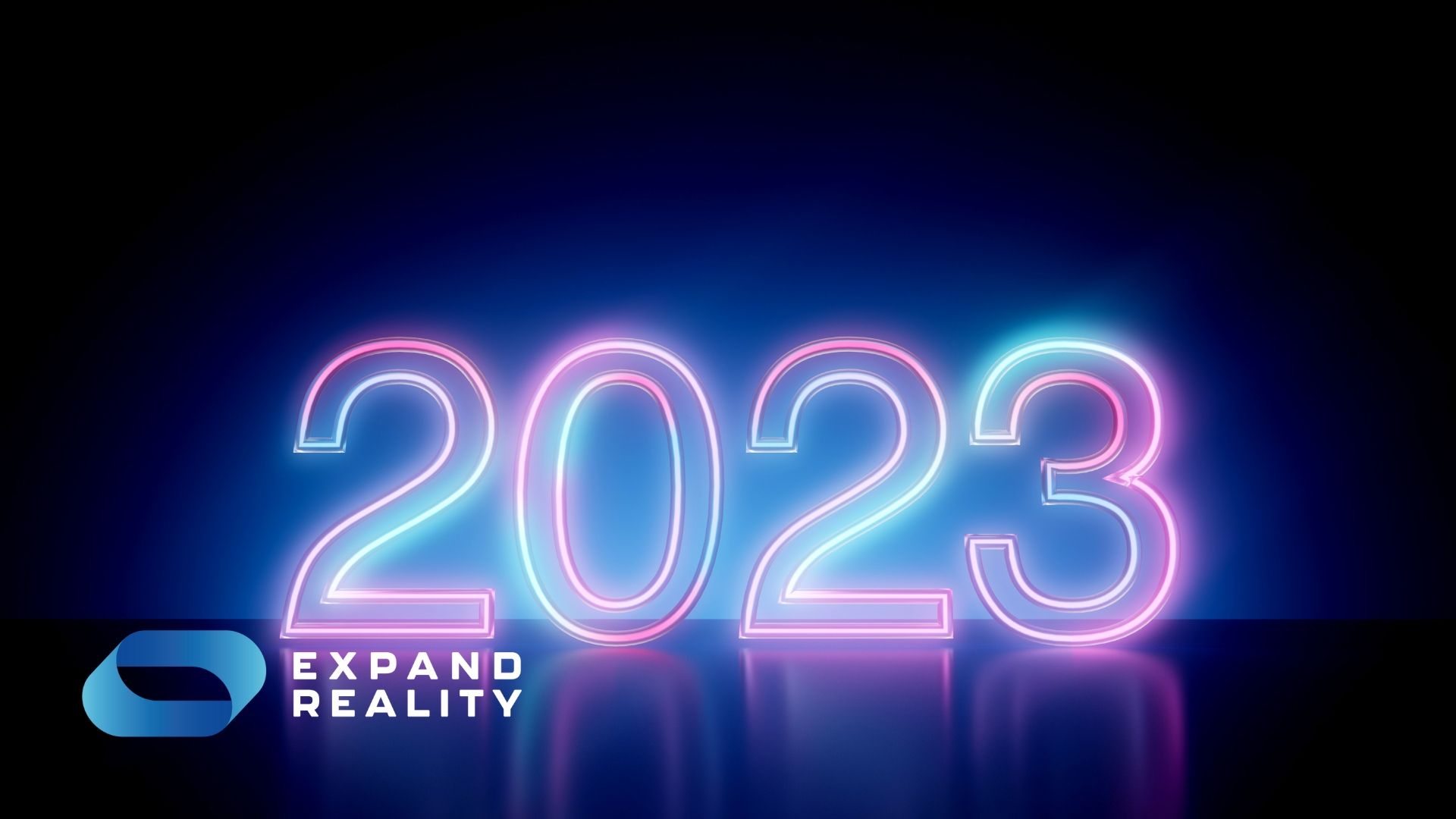hello@simplyvideo.io
Top XR statistics for 2023
XR adoption is on the rise. Discover the latest statistics and trends for augmented, virtual and mixed reality, along with predictions for the year ahead.

Welcome to our comprehensive guide to the top XR stats for 2023 and what to look out for in the coming year. If you're looking for cold, hard figures, you'll find them right here.
1. The global XR market will be worth $604 billion by 2028
Bulky, heavy VR headsets are a thing of the past. The most recent developments mean that XR technology is more readily accessible than ever before.
In fact, it's becoming so widely adopted that its projected compound annual growth rate (CAGR) is an impressive 43.5% between 2023 and 2028, with the global XR market expected to be worth $604.3 billion by 2028.
Some notable factors influencing its growth are:
- The shift to remote work, driven by the COVID-19 pandemic
- The emergence of online gaming as a profession
- Consumer engagement with XR experiences on mobile devices
2. XR is currently worth $64.5 billion
As XR tech has evolved over the last few years, so too has its use in consumer and industry applications. Today, the XR market size is valued at $64.5 billion.
3. XR reduces inspection times by 90%
Industry makes up a healthy proportion of XR buyers – and it makes sense. Research shows that utilising XR in manufacturing operations
could produce:
- Up to a 30% improvement in labour effectiveness
- Up to a 35% increase in productivity
- Up to 90% reduction in time for quality inspections.
Meanwhile, a case study of XR for educational purposes has found that VR-trained employees complete their lessons up to four times faster than their peers.
11. XR can reduce equipment downtime by nearly a full day
A recent case study shows XR resolving more than 60% of support issues without the need for specialists sent on-site, as well as reducing average equipment downtime by 14 to 20 hours.
4. The US has the biggest market share for XR displays
Recent data has revealed that AR/VR displays revenues totalled $942 million in 2022. North America is holding the biggest share of the market at around 40% and Europe is not far behind.
5. The big players are making big moves
Big brands like Nike and Ikea are already utilising AR to enhance their customers' experience. And many other leading companies are also making considerable investments in extended reality.
In May 2020, Apple inc purchased NextVR inc. with plans for a new product line including XR technology. Meanwhile, Hyundai has collaborated with WayRay to produce the world's first holographic AR navigation system.
6. AR will have 1.74 billion users by 2024
It's predicted that, by the end of 2023, there will be 1.4 billion AR users, rising to 1.73 billion by 2024.
7. VR device shipments will grow by nearly 90% by 2024
By 2024, shipments of VR devices are expected to increase by 88.86%.
8. AR software will be worth $137.14 billion by 2028
AR software is also on the up, growing at a CAGR of 57.21% and with an expected value of $137.14 billion by 2028.
9. About 80% of global workers are deskless
Globally, around 80% of employees are "deskless". This presents a huge potential driver for XR adoption. XR improves communication and productivity – and training with XR is much more cost-effective and involves less risk.
10. The digital twin market will grow to $73.5 billion by 2027
The intersection of digital twins and XR technology is another big adoption driver. Digital twins can digitally model any component or design, allowing for instant assessment and critique without risk. XR has the power to make these assessments feel more intuitive, turning abstract data into lived experience.
And like XR, digital twins are expected to boom in the coming years. AIMultiple predicts a value of approximately $73.5 billion by 2027, at a CAGR of 60.6%.
A few trends worth watching
Naturally, the biggest news in the XR world is the Metaverse. Huge investments from global companies like Microsoft and Qualcomm mean that 2023 looks to be paramount for this new, virtualised form of the internet.
Similarly, XR holoportation has begun to emerge as a trend to look out for in the coming year. Research by Microsoft in their Holoportation™ project is pushing the limits of data capture and 3D visual transfer. Users can leverage it to "transport" doubles of assets or designs in real-time.
Haptics is another development that is expected to grow with XR advancements in 2023. By successfully replicating the sense of touch, this technology would go a long way to making XR fully immersive. A benefit of this is that it would allow more immersive staff training in industries such as healthcare and engineering.
The final XR advancement we want to mention for 2023 is gesture-based computing. This technology is potentially game-changing for training workers, especially medical students and for manufacturing and product design.
As its name suggests, gesture-based computing would allow XR to be controlled entirely with gestures, removing the need for any keyboard input (or even voice commands) and allowing for a more intuitive experience.
What we think
It's an exciting time for digital evolution. XR technology is advancing at a great pace and already making a big impact on the businesses that are taking advantage of it.
A survey by Accenture has shown that nearly 60% of companies plan to make substantial investments in XR technology. We are excited about what looks to be a fruitful year for XR.
Expand Reality is a specialist retailer of augmented reality glasses and assisted reality headsets, including devices from leading manufacturers like Moziware, Microsoft, RealWear and Vuzix.

Contact Us
Connect global teams. Collaborate with remote experts. Streamline processes and unlock cost savings with industry-ready extended reality technology.
Contact Info
hello@expandreality.io
Gemini Business Park
Sheepscar Way
Leeds
LS7 3JB
All Rights Reserved | Expand Reality







